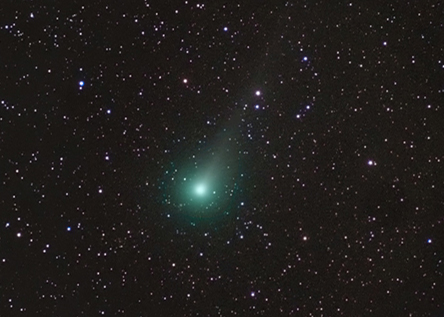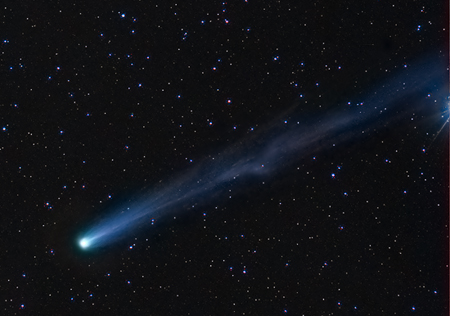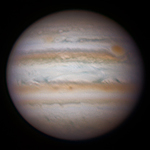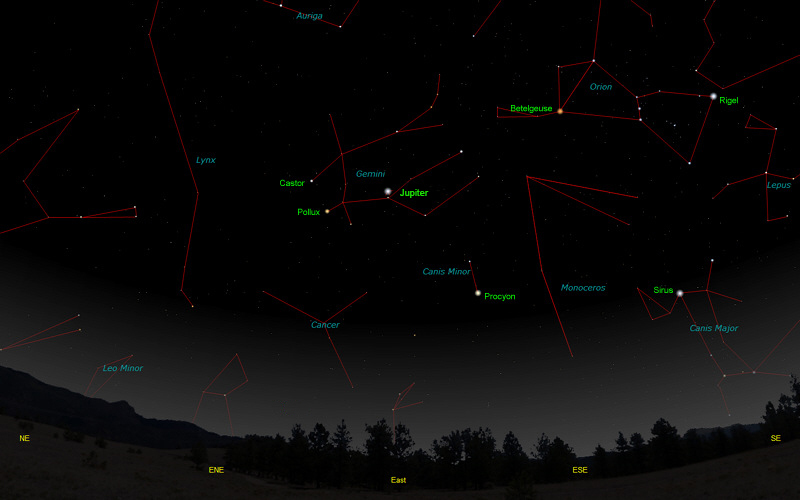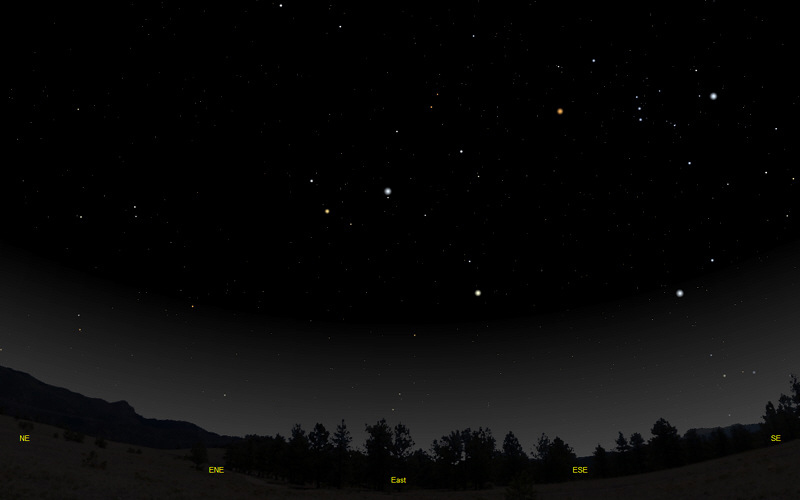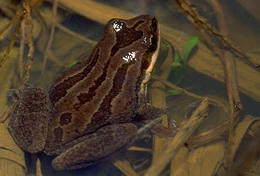The purpose of this feature is to give scout leaders, educators and naturalists an idea of some of the natural events coming up each month. We will try to cover a variety of natural events ranging from sky events to calling periods of amphibians, bird and mammal watching tips, prominent wildflowers and anything else that comes to mind. We will also note prominent constellations appearing over the eastern horizon at mid-evening each month for our area for those who would like to learn the constellations. If you have suggestions for other types of natural information you would like to see added to this calendar, let us know! Note: You can click on the hyperlinks to learn more about some of the featured items. To return to the Calendar, hit the "back" button on your browser, NOT the "back" button on the web page. All charts are available in a "printer friendly" mode, with black stars on a white background. Left clicking on each chart will take you to a printable black and white image. Please note that images on these pages are meant to be displayed at 100%. If your browser zooms into a higher magnification than that, the images may lose quality. Though we link book references to nationwide sources, we encourage you to support your local book store whenever possible. Notes and Images From November 2013
November brought a couple of comets. Comet Lovejoy was discovered by Australian amateur Terry Lovejoy on September 7th, 2013. It was an easy target in our 10x50 binoculars, and surprisingly, upstaged Comet Ison, which was quite a bit fainter and harder to find. We enjoyed watching Comet Lovejoy drift by the Beehive Cluster in Cancer. The morning I made the image at right, I heard Great Horned Owls calling back and forth and an occasional Barred Owl. Comet Ison came with great expectations. Discovered on September 21st, 2012, it was predicted by some to be the comet of the century. Comets however are notoriously unpredictable. As David Levy said, "Comets are like cats, they have tails, and they do precisely what they want." Despite all of the hype, Comet Ison was only faintly visible in binoculars. Its long tail was striking in images, but much too faint to be seen in binocular views. On November 18th I spent a beautiful early morning taking the image at right. The sky was quite clear, and the comet rose near Spica, in Virgo. The planet Mercury rose below the comet, surprisingly bright. The dawn glow was beginning to obscure the comet as I finished my exposures. At that time it was only about 15 degrees above the horizon. It appears now that Ison disintegrated during its close approach to the Sun on November 28th, and the debris left behind is fading fast. Whether anything will be visible in the early December morning sky is now very doubtful.
Sky Events for December 2013: The winter solstice occurs on December 21st at 11:11am CST, marking the beginning of Winter in the Northern Hemisphere. Evening Sky: Venus continues to shine brightly low in the southwest after sunset. The last two weeks in December is a great time to see the crescent phase of Venus. The planet appears larger and the crescent gets thinner as the month goes on, and towards the end of the month you should be able to easily see a tiny crescent in binoculars. It's a pretty sight, especially if you have clouds drifting by. It helps to view the planet while the sky is still fairly bright and to brace your binoculars against something steady.
Jupiter rises about 7:15pm CST at the beginning of the month near Castor and Pollux in Gemini. Wait till it is high in the sky to get the best telescopic views. Morning Sky: The Geminid Meteor Shower peaks in the morning hours of December 14th. Conditions are not very good for the shower this year, with a waxing gibbous Moon lighting up the sky. Mars rises around 12:42am CST at the beginning of the month in Virgo. The red planet is still pretty small to view telescopically, but its apparent size increases to 6.8 seconds of an arc by the end of the month. Saturn rises into the pre-dawn sky about 4:44am in Libra as the month begins. Mercury is still visible to the lower left of Saturn as the month begins, but soon disappears into the dawn glow.
Constellations: The views below show the sky looking east at 9:30pm CST on December15th. The first view shows the sky with the constellations outlined and names depicted. Star and planet names are in green. Constellation names are in blue. The second view shows the same scene without labels. Look for the bright stars Castor and Pollux in the constellation of Gemini, The Twins. Compare the colors of the bright stars Betelgeuse and Rigel in Orion. Betelgeuse is a red giant and Rigel is a very hot, blue-white supergiant. If you have a telescope, point it to the center of the three "sword" stars below Orion's belt. There you will find the Orion Nebula, M42, one of the most magnificent emission nebulas in the sky. The pink glow of hydrogen alpha light is visible only in very large telescopes and the nebula appears as a small greenish glow in small telescopes. Crouching beneath the feet of Orion, is Lepus, the Hare. Sirius, the brightest star in the sky, shines below Orion. Sirius is in Canis Major, the Great Dog, and for that reason is known as the Dog Star. In the late summer, Sirius rises at the same time as the sun. Because of this, the late summer days are known as the "dog days." The faint constellation Monoceros, the Unicorn, follows Orion over the eastern horizon. Low in the eastern sky below Gemini is Canis Minor, with its bright star Procyon. Procyon means, "before the dog," and refers to the fact that Procyon rises just before the Dog Star, Sirus. Look below Gemini and see if you can spot the faint glow of M44, the "Beehive Cluster." This cluster is located in Cancer, the Crab.
On Learning the Constellations: We advise learning a few constellations each month, and then following them through the seasons. Once you associate a particular constellation coming over the eastern horizon at a certain time of year, you may start thinking about it like an old friend, looking forward to its arrival each season. The stars in the evening scene above, for instance, will always be in the same place relative to the horizon at the same time and date each December. Of course, the planets do move slowly through the constellations, but with practice you will learn to identify them from their appearance. In particular, learn the brightest stars (like Sirius and Procyon in the above scene), for they will guide you to the fainter stars. Once you can locate the more prominent constellations, you can "branch out" to other constellations around them. It may take you a little while to get a sense of scale, to translate what you see on the computer screen or what you see on the page of a book to what you see in the sky. Look for patterns, like the three stars in a line in Orion's belt. The earth's rotation causes the constellations to appear to move across the sky just as the sun and the moon appear to do. If you go outside earlier than the time shown on the charts, the constellations will be lower to the eastern horizon. If you observe later, they will have climbed higher. As each season progresses, the earth's motion around the sun causes the constellations to appear a little farther towards the west each night for any given time of night. If you want to see where the constellations in the above figures will be on January 15th at 9:30pm CST, you can stay up till 11:30pm CST on the December 15th and get a preview. The westward motion of the constellations is equivalent to two hours per month. For instance, if you want to see what stars will be on your eastern horizon on March 15th at 9:30pm CST (3 months later), you would need to get up at 3:30am CST in the morning on December 15th (3 months times 2 hours/month = 6 hours). Recommended: Sky & Telescope's Pocket Star Atlas is beautiful, compact star atlas. A good book to learn the constellations is Patterns in the Sky, by Hewitt-White. You may also want to check out at H. A. Rey's classic, The Stars, A New Way to See Them. For skywatching tips, an inexpensive good guide is Secrets of Stargazing, by Becky Ramotowski. A good general reference book on astronomy is the Peterson Field Guide, A Field Guide to the Stars and Planets, by Pasachoff. The book retails for around $14.00. The Virtual Moon Atlas is a terrific way to learn the surface features of the Moon. And it's free software. You can download the Virtual Moon Atlas here. Starry Night has several software programs for learning the night sky. Visit the Starry Night web site at www.starrynight.com for details. If you have a smart phone, consider the Sky Safari 3 app (see below) before buying this software. Cartes du Ciel (described in the monthly notes above) is a great program for finding your way around the sky. It is free, and can be downloaded here. Again, if you have a smart phone, consider the Sky Safari 3 app instead. Apps: We really love the Sky Safari 3 Pro application. For upcoming events, the Sky Week application is quite nice. It is available for both I-phone and Android operating systems.
Amphibians:
December really marks the beginning of the breeding season for our Tennessee frogs and toads. We have had breeding choruses of Upland Chorus Frogs as early as December 4th. Breeding even before Wood Frogs, these irrepressible inhabitants of flooded winter fields and other wet areas will call throughout the cold winter months. Listen for their call, which sounds like someone dragging their thumb across the teeth of a plastic comb, on mild wet winter evenings. Listen also for Southern Leopard Frogs. We hear them throughout the fall. Many other Tennessee frogs and toads can also be seen on mild December nights, but most are silent. Recommended: The Frogs and Toads of North America, Lang Elliott, Houghton Mifflin Co. Archives (Remember to use the back button on your browser, NOT the back button on the web page!) Natural Calendar November 2013 Natural Calendar September 2013 Natural Calendar February 2013 Natural Calendar December 2012 Natural Calendar November 2012 Natural Calendar September 2012 Natural Calendar February 2012 Natural Calendar December 2011 Natural Calendar November 2011 Natural Calendar September 2011 Natural Calendar February 2011 Natural Calendar December 2010 Natural Calendar November 2010 Natural Calendar September 2010 Natural Calendar February 2010 Natural Calendar December 2009 Natural Calendar November 2009 Natural Calendar September 2009 Natural Calendar February 2009 Natural Calendar December 2008 Natural Calendar November 2008 Natural Calendar September 2008 Natural Calendar February 2008 Natural Calendar December 2007 Natural Calendar November 2007 Natural Calendar September 2007 Natural Calendar February 2007 Natural Calendar December 2006 Natural Calendar November 2006 Natural Calendar September 2006 Natural Calendar February 2006
Natural Calendar December 2005
Natural Calendar November 2005
Natural Calendar September 2005
Natural Calendar February 2005
Natural Calendar December 2004
Natural Calendar November 2004
Natural Calendar September 2004
Natural Calendar February 2004
Natural Calendar December 2003
Natural Calendar November 2003
Natural Calendar September 2003 Natural Calendar February 2003 Natural Calendar December 2002 Natural Calendar November 2002 Nature Notes Archives: Nature Notes was a page we published in 2001 and 2002 containing our observations about everything from the northern lights display of November 2001 to frog and salamander egg masses. Night scenes prepared with The Sky Professional from Software Bisque All images and recordings © 2013 Leaps |
||||||||||||||
